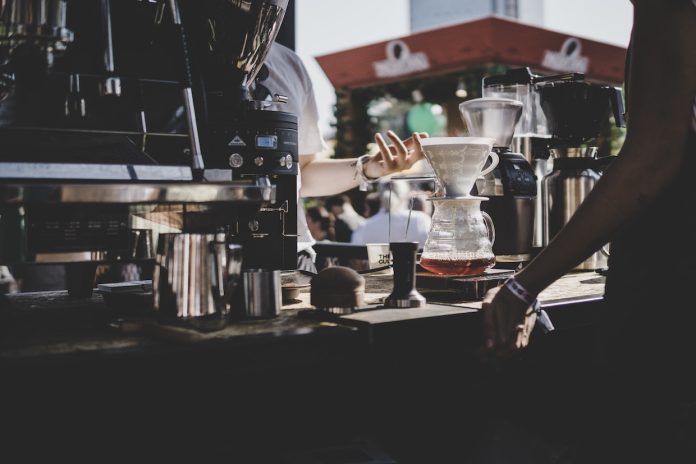Baristas working in specialty coffee shops, often associated with hipster culture, have been labeled the “shock troops” of urban gentrification, a phenomenon not exempt from the dynamics in Philadelphia. These purveyors of artisanal coffee play a dual role in shaping economic and demographic shifts within neighborhoods.
Firstly, they contribute to the transformation by working in coffee establishments catering to a burgeoning middle-class demographic, capable of affording increased rental costs. Simultaneously, this appeal may alienate long-standing and less economically privileged residents.
Secondly, these baristas typically reside in gentrifying areas. Despite limited financial means, they project a cool, middle-class, predominantly white presence. The emergence of specialty coffee shops and the presence of baristas often signify the neighborhood’s shift towards trendiness and higher costs.
As a sociology professor at Temple University with a keen interest in urban artistic subcultures, I collaborated with Keith McIntosh and Ewa Protasiuk on a book titled “Barista in the City.” In 2019, we conducted interviews with 61 baristas across various gentrifying neighborhoods in Philadelphia, including Fishtown, Kensington, Point Breeze, and West Philadelphia.
We aimed to comprehend the motivations behind baristas becoming agents of gentrification and explore their perspectives on their role in this transformative process.
Privileged yet modestly compensated, some of the baristas we interviewed held managerial positions, with a few working at Starbucks. However, the majority were employed in specialty coffee shops striving to surpass Starbucks by offering slightly pricier coffee of higher quality, sustainability, and fairness to coffee farmers.
Categorizing the interviewed baristas into two groups, we identified artistic baristas and coffee careerists.
Artistic baristas choose coffee shop employment primarily for its flexibility, allowing time for low-paid artistic pursuits or to fund their undergraduate education at art schools or other academic institutions.
On the contrary, coffee careerists harbor a keen interest in artisanal coffee, aspiring to roles like coffee shop managers, roasters, or buyers exploring other countries for the finest beans.
Both types are drawn to the relatively laid-back coffee shop atmosphere, relishing interactions with colleagues and favored customers. Many expressed a preference for this environment over corporate work, citing discomfort in a 9-to-5 setting. An artistic barista elaborated, stating, “I would probably lose my mind in a 9-to-5 kind of thing. I just am not that type of person. I don’t like paperwork. I also don’t like the feeling of not being able to be myself. … I just know I would end up hating it.”
Hailing from middle-class backgrounds, most have attended college, if not graduated, rejecting relatively well-compensated, middle-class roles in favor of occupations aligned with their desired lifestyles.
Residing in a gentrifying neighborhood not only situates them conveniently close to their workplaces but also exposes them to burgeoning art and music scenes, thrift shops, and vegan eateries. Additionally, these areas provide affordable housing options compatible with their budgets. In 2019, the average barista in our sample earned $23,000 per year, typically working 32 hours per week.
Regarding the status of being a gentrifier, the baristas we interviewed generally perceived gentrification as a detrimental process affecting lower socioeconomic class and predominantly minority populations. An example is a barista who witnessed affluent university students moving into a low-income West Philadelphia neighborhood and displacing working-class Black residents, stating, “Obviously, it’s terrible.”
Despite feeling a certain level of guilt for contributing to this process, their low-wage employment and the necessity for affordable urban spaces aligned with their lifestyles left them with few alternatives for residential decisions.
One barista expressed this sentiment, acknowledging, “I understand that I’m also part of the problem when it comes to gentrifying an area… My boyfriend tends to disagree with me on that. He’s like, ‘Well, where are we going to move, then?’ And it’s true. Like, I don’t know, we can’t afford to live in Rittenhouse Square. I can just barely afford to live in Fishtown at this point. I thought this would be a good area for meeting other creatives. And I don’t want to live in the suburbs.”
Interestingly, many baristas remained unaware of their coffee shop’s role in commercial gentrification, believing that such establishments open only after a neighborhood has already undergone gentrification. One barista expressed this viewpoint: “I think coffee shops are a symptom rather than a cause of gentrification. They spring up in neighborhoods that have already been taken over by gentrifiers.”
Urban scholarship indicates a more intricate relationship, with coffee shops acting as both a cause and effect of neighborhood gentrification. While specialty coffee shops often present themselves as progressive and inclusive, longstanding residents may perceive them as expensive, culturally alienating, and, in the words of sociologist Elijah Anderson, “white spaces.” Additionally, these cafes might displace other retail businesses relied upon by long-term residents.
Some specialty coffee shops in Philadelphia have intentionally designed their prices, programming, and decor to attract customers and residents often excluded from such establishments. Examples include Uncle Bobbie’s Coffee & Books in Germantown and Kayuh Bicycles & Cafe in Francisville. A few, such as Quaker City Coffee and The Monkey & the Elephant in Brewerytown, employ vulnerable populations like formerly incarcerated individuals and former foster youth. However, such specialty coffee shops targeting those who often feel excluded are scarce, and they employ only a limited number of baristas.
It’s crucial to note that the coffee shops employing the interviewed baristas are not the primary drivers of urban gentrification. Real estate developers and local governments seeking to enhance their tax base play a more significant role in pushing gentrification. Furthermore, larger structural forces, such as zoning rules prohibiting multi-unit and mixed-use construction and government acquiescence to NIMBY resistance to high-rise buildings, fundamentally contribute to gentrification. These forces restrict the housing supply in walkable urban neighborhoods in Philadelphia, including Chestnut Hill, Germantown, Society Hill, Mount Airy, Strawberry Mansion, and Point Breeze.
To mitigate residential gentrification, baristas could consider relocating. However, as low-wage service workers, their housing options are constrained by affordability issues and the shortage of urban neighborhoods – challenges that zoning boards, community groups, and political leaders have yet to address.



